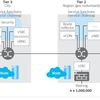Rarely does a video about network functions virtualization (NFV) captivate your attention like the one that Alcatel-Lucent recently uploaded about service innovation and lean operations in the context of NFV. Sometimes NFV can be a challenging concept to get your head around, but the video breaks it down with clear visuals and none of the PowerPoint that usually puts you to sleep.
If you haven’t seen the video you can watch the embedded version below. But also let me explain what the video is talking about.
Data center network operations are at the heart of telecommunications service delivery, but until recently nimble operations have been stalled by less than nimble infrastructure. New service creation required hardware deployments that both required up-front investment and limited service flexibility due to deployment times of days, weeks or even months.
NFV finally gets the network as lean and nimble as the virtual machines in the data center, allowing both the virtual servers and the network infrastructure to scale and change virtually as services are created or demand changes.
The Alcatel-Lucent video shows how companies can leverage NFV through the use of its CloudBand orchestration platform that manages network deployment and Nuage Networks’ network orchestration layer that does the network spin-up.
Through the use of network service chaining, which connects these services and also includes third-party infrastructure that works on the platform, operators can launch new services such as content filtering by simply clicking a few buttons for all the infrastructure components they want to spin up for the service, such as a WebRTC server.
The demo also shows how this NFV environment handles load variability and the hardware failure. When load rises, new virtual machines automatically spin up to meet the extra demand. When demand falls, virtual machines are reduced automatically.
The system also helps maintain high availability. In the demo video, when the operator needed to shift to a second data center after the first one failed, the platform automatically looked for where to set up a new backup to maintain high availability. This search included understanding the cost of service creation in various places, the weather factors, and other variables that network engineers usually need to consider when making a new deployment. Alcatel-Lucent calls this smart load placement.
Overall, the video is definitely worth a watch. Even if you already know a lot about NFV, seeing it in action is informative.












